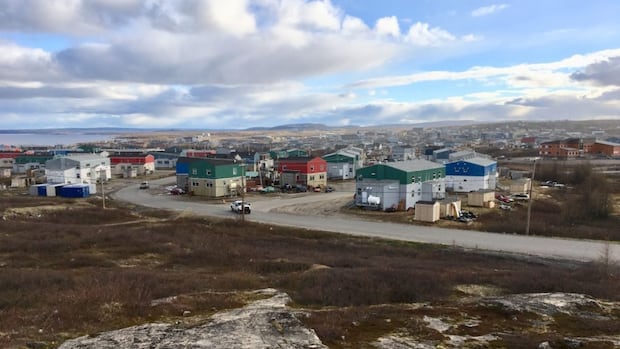I step out of the Twin Otter onto the gravel runway in Salluit, one of Nunavik’s northernmost communities nestled between steep hills along Hudson Strait. The wind carries the scent of sea and tundra as I adjust my camera bag. I’ve come to this Inuit community of roughly 1,500 people to document a story that shouldn’t exist in modern Canada—a persistent tuberculosis outbreak that has plagued the region for years.
“We’re tired of being just statistics,” says Minnie Annahatak, a community health worker I meet at the local clinic. Her eyes reflect both weariness and determination as she prepares testing kits. “TB never left Nunavik. The south just stopped paying attention.”
The tuberculosis rates in Nunavik—the Inuit homeland occupying Quebec’s northern third—remain approximately 300 times higher than in the rest of Canada. This stark disparity recently prompted regional health authorities to propose an unprecedented step: enlisting private healthcare providers to help contain the outbreak that has stretched public resources beyond their limits.
The Nunavik Regional Board of Health and Social Services announced last week they’re exploring partnerships with private healthcare organizations to supplement the region’s overwhelmed public health infrastructure. This approach marks a significant shift in strategy for a region that has long relied exclusively on Quebec’s public healthcare system.
“This isn’t about privatization,” explains Dr. Marie-Claude Lacasse, public health physician with the Nunavik health board. “It’s about finding immediate solutions to a crisis situation. We need specialized personnel who can conduct widespread screening, provide consistent treatment monitoring, and help with contact tracing—all things our current staffing levels cannot adequately address.”
The tuberculosis situation in Nunavik has reached critical levels. According to data from the Institut national de santé publique du Québec, the region recorded 50 active TB cases in 2022 alone—representing an incidence rate of approximately 350 cases per 100,000 people. For comparison, the rate across Canada is roughly 4.7 cases per 100,000.
Walking through Salluit’s narrow streets, the underlying conditions fueling this health crisis become painfully evident. Overcrowded housing—often with three generations sharing small, poorly ventilated homes—creates ideal conditions for tuberculosis transmission. Many houses show visible signs of mold. Children play outside despite the cold, their laughter a stark contrast to the serious health challenges they face.
“Housing is medicine,” says Elijah Ningiuk, a local elder I speak with outside the community co-op store. “The government talks about TB strategies, but we still have families of eight living in two-bedroom units. How do you isolate when someone gets sick?”
The proposed private partnership has generated mixed reactions. Some community members view it as a necessary emergency intervention, while others express concern about precedent-setting and sustainability.
“We’ve seen too many southern consultants come and go,” says Sarah Kenuajuak, who lost her uncle to TB complications last year. “They collect their paychecks and leave, but the problems remain. Will these private providers be any different?”
The health board insists this approach is temporary and focused specifically on tuberculosis control. The plan would bring in additional nurses, respiratory therapists, and public health specialists to conduct a massive screening campaign across Nunavik’s 14 communities, while also providing more consistent follow-up for those on treatment.
Tuberculosis, while curable with antibiotics, requires a strict treatment regimen lasting six months or longer. In remote communities with high healthcare worker turnover, maintaining this continuity has proven challenging. Treatment interruptions can lead to drug resistance and continued transmission.
During my visit to the health center, I observe the dedicated but visibly stretched local healthcare team. Two nurses manage the clinic today, handling everything from prenatal checkups to chronic disease management. TB screening and treatment monitoring add another layer to their already overwhelming workload.
“Some days we’re just putting out fires,” admits Claire Deslauriers, a nurse who has worked in Nunavik for five years. “We want to do proper TB follow-up, but then emergencies come in, medevacs need coordination, and suddenly the day is gone.”
Indigenous Services Canada reported in 2021 that tuberculosis rates among Inuit are more than 300 times higher than among Canadian-born non-Indigenous people. Former Indigenous Services Minister Jane Philpott had pledged in 2018 to eliminate TB in Inuit communities by 2030, but progress has been slow and uneven across the four Inuit regions.
The Nunavik health board emphasizes that any private partnership would operate under strict oversight and in coordination with existing public health systems. The proposal includes knowledge transfer components to build local capacity rather than creating parallel systems.
Dr. Lacasse points to successful public-private collaborations in other Indigenous regions. “In Nunavut, private providers have supported TB elimination efforts while working alongside the territorial health system. We’re looking at adapting similar models to Nunavik’s unique context.”
The estimated cost of the proposed initiative—approximately $10 million over two years—would be jointly funded by the Quebec government and federal contributions through Indigenous Services Canada.
As the midnight sun casts long shadows across Salluit, I join a community gathering at the local school. Young people perform traditional throat singing while elders share stories. Despite the heavy subject of my reporting, there is resilience here—a community determined to overcome challenges that have deep colonial roots.
“TB isn’t just a bacterial infection,” explains Louisa Thomassie, a cultural program coordinator. “It’s connected to our history of forced relocations, residential schools, and ongoing inequities. Any solution needs to understand this context.”
The next morning, as I prepare to board the plane back south, I reflect on the complexities of addressing a disease that should have been eliminated decades ago. Tuberculosis persists in Nunavik not from lack of medical knowledge but from systemic failures to address the social determinants of health that allow it to flourish.
Whether the proposed private partnership will finally help turn the tide remains uncertain. What’s clear is that Nunavik communities deserve more than piecemeal interventions and unfulfilled promises. They deserve the same freedom from preventable disease that most Canadians take for granted.
As my flight lifts off above the tundra, I carry with me the stories of a resilient people fighting not just tuberculosis, but for the dignity of equitable healthcare—a fight that continues long after I’ve returned to the comforts of the south.






